Second Season: Episode #11
A Feeling of Transformation – Part 2: Preparation
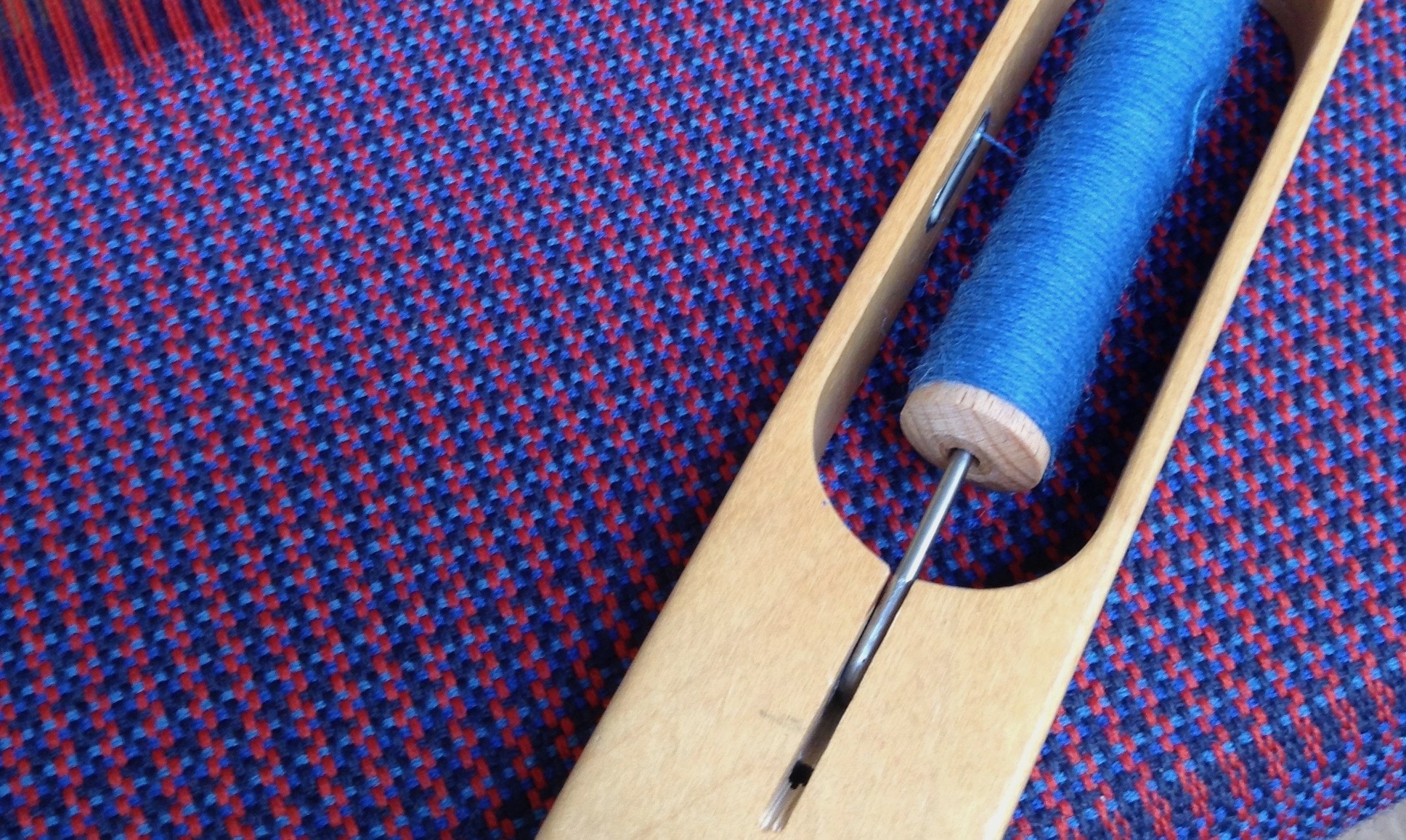
A talented, young Costume Designer, Sinead Kidao, who has worked on films like Beauty and The Beast, Little Women, and The Dark Knight Rises, talks about how she uses textiles and the role the deep hand-skills of embroidery, weaving, knitting, and tatting play in creating authentic costumes. Sinead has also compiled the first Costume Directory to help other designers use sustainable textile producers who pay a living wage. We also hear from the Breakdown Artist, Jo Weaving, whose job it is to make costumes look lived in, from ballgowns to battle dress. She specialises in wear and tear, from blood to bird poo.
Thanks to Sinead Kidao and Jo Weaving for sharing the way they approach fabric and cloth, and what they do to it to make it look believable.
If you want to see more of Sinead’s work you can find it at https://www.sineadkidao.com/ .
Her Costume Directory is a treasure trove of interesting and sustainable suppliers: it is free to download. And you can follow the Directory and Sinead on Instagram at https://www.instagram.com/thecostumedirectory/
Update: Lot of people have asked: What happens to the costumes when the shoot is finished? I did ask Sinead this, but I didn’t have time to put it in the podcast. So for all those interested here’s her answer:
Sinead Kidao
It really, depends what happens to the costumes at the end. And it’s funny, everyone always asks this question. I think it’s because people do think, Oh my God, there are hundreds of costumes, where do they go is there some sort of costume graveyard somewhere. But yeah, it just depends: there are costume hire houses in London and all over Europe, which are a huge asset to the industry and they often will buy the costumes that you’ve made, and then they might rent them out to other productions. Often on a period piece, you will hire a lot of your crowd costumes. So you’ll go to a costume house and you’ll find original pieces that maybe you might use as a sample, or you might then hire for all your crowd or, elements of your crowd.
And then on bigger productions that are sort of like the more American blockbuster films, they, they will hold onto the costumes themselves. So often they might go into storage and then I’m not a hundred percent sure what happens. They say, they go on to other productions or the key costumes will get kept and kind of put on exhibition in different places. So they have another life, they do, hopefully, they have another life. I mean, often on contemporary productions, they might try and pass things on.
I do deal with this in the Costume Directory. When you get to the end of a production, it tries to show people different ways distributing the clothing you might have at the end of a production. There’s not always just passing it immediately onto a charity shop cause often charity shops get overloaded. So it’s thinking about things like there’s a few different organizations like Suited and Booted, who take on and suits and give them to people who are applying for jobs. So if you’re on something that’s contemporary and you need a lot of formal suits and everything like that, that you can repurpose those and pass those onto other organizations. So there are lots of options. It just takes a bit of thought.
Jo Weaving can be found at costumeprintworkshop@gmail.com. She has just moved into her new studio in Hastings, but she is planning to run some breakdown classes at the studio in future. E-mail her if you would like to go on the mailing list to stay in touch and find out what she’s up to.
If you would like to sign up for your own link to the Haptic and Hue podcasts as they are released, for extra information and a chance to access the free textile gifts we offer with each podcast in this series then please fill out the very brief form here. If you are interested in a long read or two, or want to know why and how cloth speaks to us then you can find articles at www.hapticandhue.com/read
You can follow Haptic and Hue on Instagram @hapticandhue on Facebook or Linked In under the Haptic and Hue name. You can see more of my work and that of other makers there or on the website.
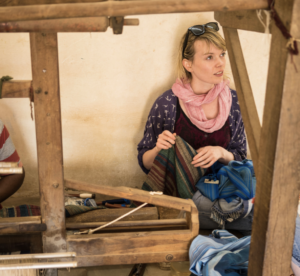
Sinead Kidao

Little Women, Sinead was Assistant to
Costume Designer, Jacqueline Durran
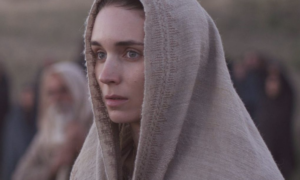
Rooney Mara in Mary Magdalen,
Costumes by Jacqueline Durran
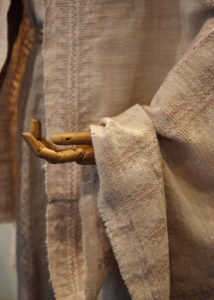
Embroidery detail Mary Magdalen’s
robe, Costume Designer Jacqueline Durran
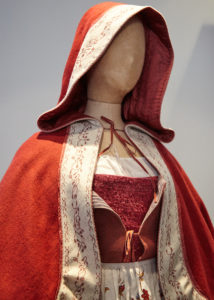
Belle’s dress from Beauty and The Beast,
Costume Designer, Jacqueline Durran
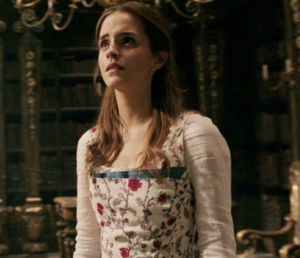
Emma Watson as Belle, Costume
Designer, Jacqueline Durran
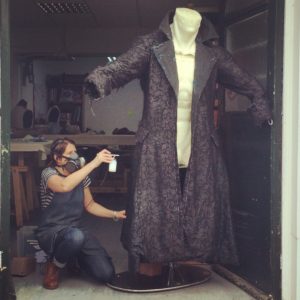
Jo Weaving, Breakdown Artist
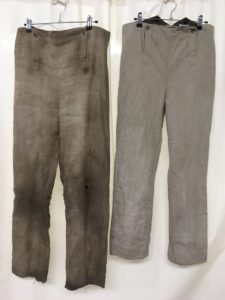
Jo’s work on trousers for the film,
Peterloo

Heavy breakdown for a warrior in Macbeth
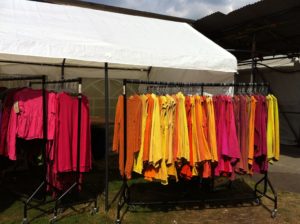
Dip-dyed Costumes, from the film Pan
Costume Designer, Jacqueline Durran
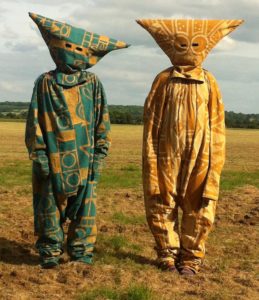
Printed and toned costumes from
the film, Pan
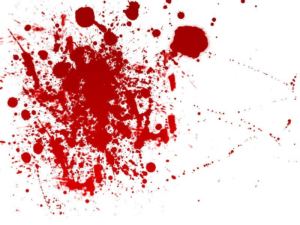
Stage blood
Transcript
There’s a moment in the first Lord of the Rings film where you can tell if there are other textile addicts in the audience. The little hobbits are at the great black gates of Mordor, but they can’t be seen as they are wearing invisibility cloaks – a gift from Galadriel. A close up of their frightened faces is heart-stopping – but not for the reason the director intended – and it almost always brings a gasp from weavers and other makers in the audience as they spot the beautifully woven cloaks the hobbits are wearing. All interest in the plot is lost as we crane for another glimpse of these lovely things. They are made of natural grey and white Gotland wool, woven for maximum invisibility in a technique called shadow weave. For a period of time you could buy them in New Zealand and I have one which I treasure.
There’s always an extra dimension of enjoyment for handcrafters and makers that screen and stage brings, as we spot a particular kind of quilting, admire the fabric of a dress, or see a handknitted pullover or beret. We can probably all name iconic costumes that live completely in our memories, here’s an instant summary from the recesses of my brain – the black and white Ascot costumes designed by Cecil Beaton for My Fair Lady, Marilyn Monroe in THAT dress above the subway grating, I’ve never remembered what film she was publicising, but the dress – YES. Lena Horne in Stormy Weather, Mary Poppins, James Dean, Marlon Brando – in a Streetcar named Desire. I’m sure you have your own instant list too.
The great Hollywood costume designer, Edith Head, who won 8 Oscars and became a household name in America in the 1960s and 70s, said of her craft:
What a costume designer does is a cross between magic and camouflage. We create the illusion of changing the actors into what they are not. We ask the public to believe that every time they see a performer on the screen, he’s become a different person.
And that’s what this episode of Haptic and Hue is about: the detailed and patient work that goes into that magic and camouflage that brings to life characters and stories that live in our memories and become part of the context of our days.
Welcome to the second series of Haptic and Hue’s Tales of Textiles. I’m Jo Andrews, I’m a handweaver interested in how cloth speaks to us and the impact it has on our lives.
Each of the episodes in this series takes an emotion and unravels how we express that feeling in textiles. This time we are looking at a feeling of transformation. In the last episode the actors Emily Mortimer and Alessandro Nivola talked about the central role costume plays for them as they construct a new role. This time we go behind the performance and hear what it takes to design the look and the costumes that bring a play or a film to life.
The most important thing is that everyone working on a project is working on the same project, so that you’ve got an overall vision that you’re all facilitating in a way. And usually that will come from the director and they might have a very clear focus or they might not have a clear focus and you might present ideas to them. And they’ll say, yes, I, I really liked that run with that, or no, I don’t like that. But the main thing is that you’re working very closely with the production designer and a cinematographer. I’m the director and your actors, so that everyone believes in the character at the end of the day and that you’ve got it, that everything matches really so that what you’re doing matches the set, matches the lighting and matches the tone of the whole piece. Because if you’re working on something that’s quite stylized, then it’s so important that everything fits together, or if you’re trying to make something be completely historically accurate. And, and all of those elements really have to go hand in hand in order for the audience to just say this and watch something and believe it, and not be really thinking about either the costume or the sets or anything. They’re just sort of looking at these characters and believing it.
Sinead Kideo is a name you want to remember, she’s a young costume designer – who brings a fresh and talented eye to TV and film drama. Over ten years she has worked her way up from junior wardrobe roles to the top slot as Costume Designer. She shaped her eye on films like Anna Karenina, the Dark Knight Rises, Little Women, Mr Turner and, recently, two episodes in Steve McQueen’s Small Axe TV series. She comes at costume design with a deep regard for the skills of hand-makers.
Oh, there’s so important. I mean, there’s nothing more exciting than than a piece of knitting. I grew up in Ireland and I went to a convent school. And so it’s, it’s interesting that some of the things that people know, I think are very old fashioned and eight dated have been really important to me as a costume designer. So I learned to knit from, I think the age of six or seven and got in a lot of trouble when you know, a undiscovered that I had, my mother had done some of my knitting because I hadn’t learned to purl. So I spent a lot of time knitting as a child and, and learning to sew and all of those things have been hugely important to me, but they’ve also meant I really value what you would call like the old fashioned traditions, but as when you’re working on something that’s period, if you’ve got someone who’s a very very talented knitter or a Weaver, there’s nothing more exciting to a costume designer because it just adds so much more integrity to what you’re creating.
When a film or TV series gets commissioned the costume designers are usually one of the first people to be hired. They are needed early on to start the collaborative process of creating a look for the production.
So essentially you start with a script and so like anyone else working on a film or TV program, the script is the most important thing that you have to hand. And so really you’re just thinking about the overall film or TV program or whatever it is, or a theater production. And you’re thinking about who these characters are and what they would have worn and what the period is that you’re set in. So you really just start with research and you’re thinking of visual research and the history of the time and trying to get as many sort of first hand images and photographs or paintings or anything that existed that time, that might’ve shown you, what people wore and how they wore it. So that is really the starting point is the script. The character is you, you break down a script, so you look at it you read it first of all, and then you, you go through it kind of line by line and character by character to try and find out who they are, where they’re from, what they’re doing, what they’re like, all of those sorts of things. And key moments that are mentioned in the script that will affect what they’re wearing. The time of day, the season, all of those kinds of things are hugely important to, to what a costume will ultimately be.
And reading yourself in – making sure you know as much as you need to about the materials and clothing or an era takes time:
Usually you’d have a few months before you’d start filming to work on it, but in an ideal world, you might have six months of something to really get into it and think about it. Because when you’re a costume designer, the type of projects you work on reading varies. So you might be doing a biblical project, you know, for six months, and then you might do something that’s 1920s, and then you might go to the Regency period and then you might move on to the eighties and then you might do something contemporary. And then you go back to doing something medieval. So even if you’re the most kind of educated costume designer in the world, you will still have to do a huge amount of research because no matter what you’ve done, you’ll probably never have done what this project requires of you. So you, you’re constantly learning and you’re constantly reading. And with each project, the more time you have, the more you, you learn, often you get to the end of it and you think, Oh, now I finally, you know, have that period nailed. And then you go on to do something else.
Sinead and other costume designers look at fabrics and cloth in a different way from the rest of us. We think: do I like that, is it a colour that suits me, will that cut work for me or the person I’m making it for, is the pattern pretty? Very little of that occupies Sinead’s brain, instead she’s thinking is this authentic to the period, will it dovetail with the set design, and above all, how will this read on camera?
It’s really very important in a sense, because you think about it, especially if you’re doing something that’s a film, because we often think in terms of like an IMAX cinema, which is, I dunno, 20 double Decker buses or something like that. So people will really see every single detail and with HDTVs, all of these kinds of things, that the quality of what you’re producing, every texture, every grain, it can be really visible on camera. And so if you get something that’s like, if you’re doing something that’s biblical and you find something that’s hand-woven, or even 18th century, those, those sort of textiles will really read on camera and they can create so much more of a visually interesting image than if you were to just use something that’s machine made or flat. And, so that when you’re looking at an image, you believe that this person has not just kind of picked it off the hanger for the first time in the wearing it. And so if you have really good quality fabrics that are true to a period, then those sort of things will respond in a much more believable way than if you were to use something that’s modern.
But all the time costume designers are holding a balance in their minds between integrity to the period in terms of what is being used and integrity to the audience to allow them to perceive it in a way they can relate too. At times the two things are not the same at all.
So if you want to, to break the rules, I think you need to know the rules in the first place. So for me, it’s always important to really do a huge amount of research and understand what date you’re setting something in. And then if you want to be kind of quite conceptual with your ideas, or you want to be quite stylized or have a very fixed palace in terms of the colors that you’re using, you can do all that. But it’s just really important to, to know in advance. And often you’re really, you are beholden to the overall project, but you also slightly beholden to your audience because you need to sort of not be so constricted by a period that you alienate your audience either. And so if your audience is maybe, you know, if you’re doing something that might be a Disney production, then your audience is children or young girls or young boys or, or whoever the target audience for your production is you want something that they will really enjoy watching and they’ll really get involved with. And so in those sorts of productions, you don’t necessarily feel as responsible to the period perhaps as you might do in something else.
And if you veer away from the rules: guess what happens?
It is really tough because you’ll always have people who come back and say, Oh, you know, this isn’t quite right. And this is, you know, Oh, it’s meant to be the 1860s and you’ve done the 1850s or, you know, or, or things like that. And I mean, as for myself, I think the main thing is that if you can stand by any of your decisions as a designer, then, you know, and often you do more research than anyone who’s watching it. Or the vast majority of people who’s, who’s watching it won’t have done any research. They might have a broad view of the period, or they might think of things in terms of, you know, the historical plates, but you might have looked at a character in terms of a real character that existed, that didn’t go by the rules or that sort of veered off the path or was something, or you might’ve taken a decision to make a really characterful choice. And then people will watch it and go, why have you done that? Or why have you done that? And, and, you know, there’s so many reasons behind that and you just want an audience to, to watch it and enjoy it and not be questioning those things. So it is a, it’s a fine line.
Costume designers seem to be a bit like conductors of an orchestra, they understand the overall vision they want, and they have different sections to carry out the tasks, embroiderers, weavers, dyers, printers, with each part playing its role in creating the whole look.
And, and I’ve worked on projects before where we’ve gone to great lengths to try and find people who still do tatting. And we’ve gone to great lengths to find people who do weaving to a certain width, because in ancient times, for example, you wouldn’t have woven beyond. I can’t, you know, a certain, I think like, probably about a yard on the older machine. So trying to get things like that is incredibly important for the success of any costume. We often find you know, knitters, embroiders or weavers who might be just doing their own thing. And then we contact them because we’ve got very specific requests. And I think often it can be really interesting for people to take what they do and then to translate it onto something that might be period, or it might not be what they would typically see as the finished result for their product. So like that, you know, taking a specific type of embroidery and then translating it onto a piece that might be you know, for say something that’s 17th or 18th century or someone who does a specific kind of, of printing and then using their technique in a different way to do something for a costume can be really interesting.
Both stage and screenplay an important role in helping to keep some of these older and more obscure handcrafts alive. One project Sinead worked on, as the Assistant Designer to Jacqueline Durran, was the film Mary Magdalene, starring Rooney Mara, which came out in 2018.
It really resonated because we spent so long getting we had a quite large, long run-up to it, and we spent a lot of time working on getting fabrics woven. So we got our worlds woven by weavers in Budjari in India. And so there were hand-woven wools that then we had hand-dyed and then they sent to a refugee camp in Jordan where we worked with a cooperative of women who were Palestinian women who had been who were living in the Jerrish camp in Jordan. And they did the most incredible cross-stitch embroidery, which would have been the traditional stitch used, in biblical times. And, and for me working, we work together over what’s up for months to get these embroidery’s right. And the finished product was so incredible. And it was actually quite moving when it arrived because it was all just so beautiful. And for, yeah, I’ve got so much of that embroidery, just every single scrap that was leftover, I felt like it was so valuable. It couldn’t go away. So my house is just full of random pillows covered with this Palestinian embroidery. And that for me was probably the most yeah, the most special project.
If you want to watch a film just for the textiles then this one may be it! Sinead knows that it’s the skills of others that make it possible for her to put something special on-screen.
And it’s wonderful as a costume designer, you sometimes have an idea in your head of what something is going to be, but then you hand it over to someone else and they make it look incredible. And I think that’s what often happens with the people who actually work on the textiles and indeed your posture and cultures and your embroiderers and all of those people who are involved because without them, it’s just an idea. You know, you’ve just got an idea of what something should be, but they’re the ones who can actually make something really amazing.
And there’s one particular role that’s a vital support for all costume designers. Someone who few of us, unless we have worked in TV or film, will ever have heard of – A breakdown artist:
I think when people watch something and they really believe the costumes and believe the characters it’s often because you’ve got an amazing breakdown team and people working on it to distress it into age and to, to make it look really real and believable. And often you can notice when you watch productions, where they haven’t had those, those facilities or for whatever reason and the costumes look really new and it can be sort of discombobulating, I think in a way.
The minute Sinead mentioned breakdown artists, I thought that’s what I want to be when I grow up. Distressing my own clothing is something that comes pretty naturally as my grandmothers knew, but imagine having the freedom to do it deliberately.
Basically if a garment was seen brand new, straight from the makers or brand new, straight from the shops, it just wouldn’t look believable. And so we give it the believability. So we make the costume looked like the person or the character owns it. So whether it’s been in the obvious situation, like in a battle or whether it’s work where then obviously you’ve got heavier breakdown on it, but everything down to just your favourite jumper or a pair of jeans that you have worn a few times, we make it look realistic. And so we give it a bit of life and a bit of history and just make it look like the character belongs in it.
That’s Jo Weaving, a breakdown artist who runs her own team in Hastings on Britain’s south coast. She says there’s no one way to become a breakdown artist, she studied textiles and costume and then got a job working in Jim Henson’s Creature Workshop in London. She says break down artists need a basic knowledge of printing and dying, you need to be a good painter and to have an eye for colour:
You would always start as a trainee. So you would learn as you work. Because every single film and every single job, it’s a new challenge and it’s a new problem solving every garment you get, there’s a different story behind it. It’s a different combination of fabrics. So you have your basic materials that you use, but you always use them in a slightly different way. So you’re, Oh, it’s forever changing. And you’re trying to push fabrics in different ways each time. So there’s, there’s no one answer. It’s each garment that comes in. You, you tackle it as if it’s a new challenge.
Breakdown teams have around four or five permanent employees plus up to 15 to 20 people brought in at busy times to work on 100s of costumes. They often start from a single reference given to them by the design team:
It might be a picture of like a Goya painting or children’s illustrations or something. And that will be the, the general palette that may be, they see that scene being so that whole crowd scene. And so we’ll sample lots of fabrics to create that palette. And then we’ll use that palette as the costumes come into us during the course of the production. Then once the fabrics are died, they’ll go back to the makers, there’ll be made into the garments. And then when the garments are made, they’ll come back to us because once everything gets put together, there’ll be certain fabrics that don’t really work together anymore and something would jar or jump out. And so then we will redial and slightly, almost like putting a wash over the colours so that they sit with each other in a nicer tone. And then, and then we’ll age them and we’ll make the costume look like it’s been worn.
And that might be for a scene that in the final edit last just for seconds. Jo says that much of the time in crowd scenes the job is about making her work as invisible as possible
You don’t want anything in that crowd to jump out or distract you unless the designer wants you to. So all of that crowd scene will often have been tweaked and dipped and dyed to be more subtle and to be into the palette that the designer wants. So even though you’re still seeing reds and yellows and blues, we’ve usually tinted all of those dang. So that they’re a nicer tone. And then your eye is not distracted by that. Your eye is just going to be on the principles. So that’s predominantly what we do is we’re constantly changing the tone of costumes and fabrics. And if you don’t notice anything, then we’ve done a good job on it. If you notice something like it’s too new or there’s a mark, then, then you, your attention has been drawn to the wrong thing. So you could have a whole scene of everybody in white and we will have died all of those white fabrics so that there are much nicer palette of white and a white that looks good on camera.
And then there are the battle scenes. Jo worked on the 2015 Anglo French film of Shakespeare’s Macbeth. Jo sent me a wonderful close up of Sean Harris who plays Macduff in a battle scene. I’ve posted it on the Haptic and Hue website so you can see it too.
So he’s heavily broken down. The sash that is wearing was started off as just a white fabric. So that was dyed. And then we made stencils and printed the images on it and then aged. It did the armour that he’s wearing would have been a really pale fabrics and pale letters and that we’ve aged it and mudded it so that he looks like he’s been in battle. So when, when you normally see breakdown, people just jump to the first thought that it’s battle, it’s work where it’s heavy marks. The holes is like elbow grease, basically. It’s lots of sanding and bleeding. And then the blood is there. There are a lot of good companies as a company called Pigs Might Fly who do stage blood. So if you need it to wash out, then we’ll use that. If you need it to be permanent, then will make paints and dyes to be the right colors of new, fresh blood or aged blood. And then there’ll be permanent. So you could wash it and it will still look like that.
Blood is an entire specialist topic in itself: exactly what kind of blood do you need?
Well, if, if someone’s just recently been injured, then that then they’ll have fresh blood, but if you’re seeing them, like at the end of the day in this, in the plot, then the blood will have dried and the blood will have dried into the fabric and will be much darker. I mean, it obviously the makeup department would do the blood that’s physically on the person and then we’ll do the blood that’s on the costume. So you have to liaise with them as well. And obviously, the base fabric will dictate how you paint the blood, because if you want it to look fresh and red, then if you’ve got a dark fabric, then you have to make something that still will look red on top of the dark fabric. Each job is a different task. So you just have to quickly work out what will look good on that fabric.
All kinds of weird requests come her way, fabricating bird poo anyone? And it also means that Jo looks at the people in a different way from most of us as well:
So I’m constantly looking at people in the street at, at work and at people walking around in any situation, you’re constantly looking at how clothes set and how they hang and how they just mold to a person and mold to that character. I love collecting books, photography, books of real photos and just street photography and people who’ve been in workwear and things like that. It’s just looking at how clothes belong to a person and where marks might be and where things are worn naturally. So if you’re looking at obvious things like workmen in the street, it’s like, where are the marks? If they’re, if they lay in pipes, where’s the, where are the most marks on their jumpsuits? Or if you’re looking at people who work in a garage or, or carpenters, it’s like, where do their clothes wear and where are their marks and what sort of level of marks are there.
None of this comes cheaply and both Jo and Sinead work with fabrics and costumes in bulk, which is one of the reasons why film and TV budgets sound so huge to us. Cheap films are anything under fifty million dollars. And that leads us to the important question of sustainability. In a world where we are drowning in textile waste, it’s something that Sinead takes seriously. She worked as the Assistant Costume Designer to the designer Jacqueline Durran, on the 2017 film, Beauty and the Beast, which starred Emma Watson as Belle. They decided to see if they could source an entire costume sustainably.
And so this costume, which was Bell’s costume that she wears it’s a red Cape and it’s one specific costume. I think there’s like 16 different fabrics involved in the whole costume, but some of the wool that we used was like a vintage Jacob’s wool that had been bought in a market. Another one of the linens we used had been sourced at been someone’s textile project from the 1960s that Jacqueline had sourced on eBay. And then that was over-dyed using madder. And then we use like a piece silk, which was sourced from India that we’d sourced for another project, but then that was blocked printed in our, in our work room. We used some different vintage textiles. Hand-Woven like caddy cotton. I source a lot of cotton from India from hand weavers and local cooperatives. There’s also like a nettle fabric that we used quite a lot in a few different productions and we’ve used it in quite a few different ways.
That exercise created new contacts for Sinead and got her thinking about how the textiles she uses are made.
You don’t really think about the whole journey of what you’re wearing or where it’s come from or what’s happened to it along the way. And I think taking a step back and actually thinking, Oh, okay, well, you know, this was the original, you know, cotton was farmed in India than it was woven in Italy than it arrived here than it was dyed. Then this happened, then this happened and you’re sort of piecing together so many different people have been involved along the way. So many different components and very rarely do people kind of think about the people I think in the supply chain along the way. And that’s something that I’m quite conscious of because I think over here, we’re all, you know, someone who makes clothes for a living. So when you start to think about it and you start to think of all the different component parts, you really start to value an item of clothing or costume, whatever it is because you respect how much time and energy has gone into that whole process.
Sinead knows that it’s really difficult to achieve full transparency in complex supply chains like textiles. But she looks for certification, but also works with small cooperatives that she has a trusted relationship with:
So in large part, what I’ve tried to do is really ask questions. And I find that the companies who get back to you and are quite thorough in their responses will very clearly lay out for you where something has come from, what their, what their policies are. And you can never be a hundred percent sure of something. But if you really ask the questions, those companies will know that the people who are their consumers want to know and our interest in that and whether it is you’re buying a top or a dress, or you’re buying a fabric, actually emailing the people directly and finding out what their supply chain is, can have a huge impact. And those companies that don’t get back to you, then maybe you don’t support, but they will have registered your interest.
Usually, costume designers keep their contacts close to their chests, it is after all what makes them stand out from others. But Sinead understands that often costume designers don’t have the money or the time to do the work tracking down ethical supply chains:
And so I decided to compile all the information I had into a directory. So it’s called the costume directory and it’s a guide of ethical and sustainable suppliers. And ultimately it was just my information. You know, I’m not an expert on this. But I put it all together. I put everything I had together and the hope that then all the designers would use it. And I wanted to try and send as much business to those companies who are doing the right thing, because as we know, it’s very hard to compete. If you’re a company, that’s got a huge amount of integrity and you’re trying to, to support all your workers and pay them all fairly and produce in a sustainable way that doesn’t harm the environment it’s expensive. And it’s tricky to compete with those companies who aren’t doing the right thing. So for me as costume designers, I feel like we’ve got huge amounts of budget at our disposal compatibly to the average consumer often say, you know, we make or produce more clothing on a, on a film or TV program than most people will consume in a lifetime. So our spending power is quite big. And so if we can put that in the direction of more sustainable suppliers then it’s a great thing. And I mean, it doesn’t, you know, it’s not as if any production can be a hundred percent sustainable and fair trade. And ultimately, I think you can’t compromise the design. So if you’re looking for something very specific and you can’t find it from an ethical or sustainable supplier, then perhaps you have to go to another supplier, but it’s just having access to that information. And, you know, having other options than the typical options we always go for.
And if you’d like to access that directory yourself, the link to it is on the Haptic and Hue webpage for this podcast at www.hapticandhue.com/listen. You will also find a full script of this podcast and pictures of some of the work we have been talking about in this episode. There is a form there that enables you to get these podcasts directly in your inbox, which gives you a chance to win the textile-related gifts I give away with each episode.
Thanks to Sinead Kideo and Jo Weaving, think about them when you next watch a film and wonder about the costumes, now you know the skill and heart they put into every single one.
Next time we will be looking at how people have made cloth more resilient in different cultures, from western Europe to Bengal and Japan, and some of the stories mended and revived cloth can tell us.
Thanks for listening and I will leave you this time with a short poem that I love, it was written by the great Irish poet WB Yeats in 1899. I’m not sure that the costume designers of the world have their own poem, but if they did this should be it:
Had I the heavens’ embroidered cloths,
Enwrought with golden and silver light,
The blue and the dim and the dark cloths
Of night and light and the half-light,
I would spread the cloths under your feet:
But I, being poor, have only my dreams;
I have spread my dreams under your feet;
Tread softly because you tread on my dreams.